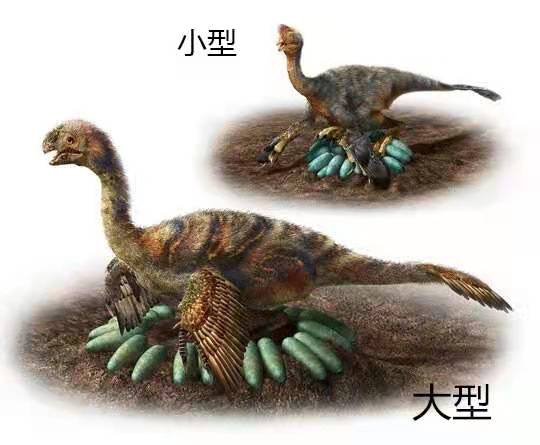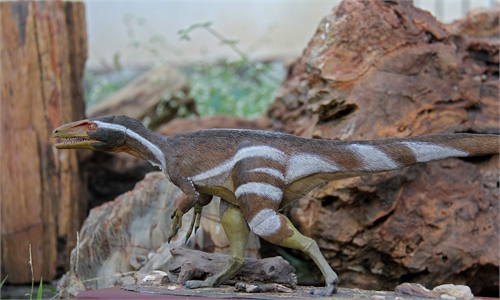ARTS / CULTURE & LEISURE
China unearths fossils showing brooding behavior of oviraptorid from 70 mln years ago

Image shows the brooding behavior of adult oviraptorids. Photo: Courtesy for Bi Shundong
A group of dinosaur fossils recently discovered in Ganzhou, East China's Jiangxi Province, have revealed an unprecedented paleontological finding to the world as they preserve a rare scene of an adult oviraptorid skeleton atop an egg clutch that contains embryonic remains.
The oviraptorid fossils were identified in stratum dating back to 70 million years ago. The discovery shows that the oviraptorid who lived in the Late Cretaceous was around two meters long. There are at least 24 eggs that have been found in one egg nest and the dinosaur was in a typical hatching posture (of modern birds) with its forelegs spread backward and covering the egg nest, while the hind legs were folded under the body.
In addition to the rare discovery of the hatching posture, a more significant finding was that the egg clutch contains the remains of embryos that were undergoing brooding.
Although researchers have found fossils in Mongolia and China’s Inner Mongolia Autonomous Region of individual oviraptorids lying on egg nests, the brooding behavior of this creature has remained a mystery for paleontologists worldwide since no fossilized embryos had been found to validate whether oviraptorids brooded or not.
“This discovery provides the latest evidence for us to study the hatching behavior and methods of this type of dinosaur,” said Bi Shundong, the first author of a published academic report related to this study, told the Global Times on Tuesday. Bi is also a professor at the Paleontology Department of Yunnan University and is a head researcher of this oviraptorid project.
“It is the first case discovered in the world, I mean the three things altogether in one fossil – the adult skeleton of an oviraptorid, the embryonic remains and the egg nest,” Bi emphasized.
With the title “An Oviraptorid Preserved Atop an Embryo-bearing Egg Clutch Sheds Light on the Reproductive Biology of Non-avialan Theropod Dinosaurs,” the project’s findings were published in the academic journal Science Bulletin in December 2020.
Oviraptorids are a type of bird-like dinosaur that were small – often about the size of an adult human – and possessed parrot-like beaks as well as toothless jaws. They were also notorious for stealing eggs from other dinosaurs thus earning them their name, which translates to “Egg Snatchers.”
The city of Ganzhou has been honored as the “hometown of dinosaurs” in China since 2017 because of its prolific dinosaur and dinosaur egg fossils.
“It is not surprising to find dinosaur fossils, but the discovery of fossils that show a creature’s particular behavior is rare and valuable,” said Bi, explaining the value of the discovery.
“China has many amateur paleontologists and dinosaur lovers, we want such findings to not only be published as an academic paper, but also be interesting to scientific-minded readers,” Bi added.


